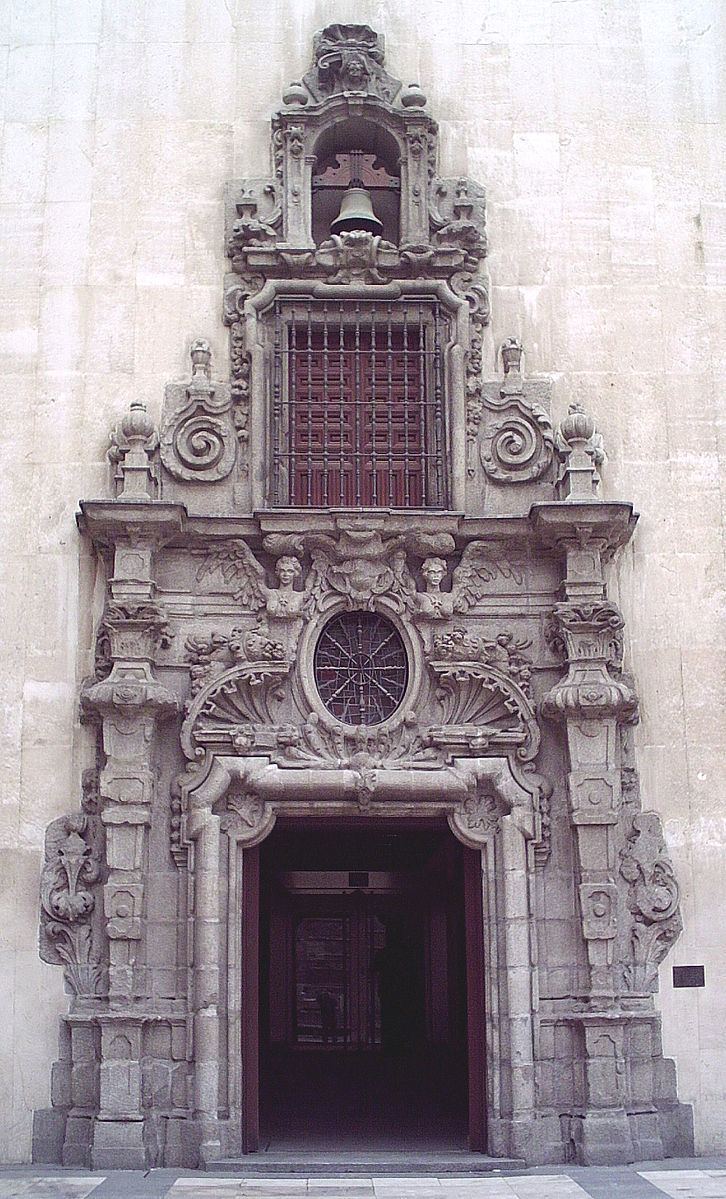Type Bank Number of employees 15,279 (2009) | Net income € 622.3 billion (2009) Founded 14 December 2012 | |
 | ||
Products Consumer BankingCorporate Banking Parent organization BFA Tenedora de Acciones S.A.U. Subsidiaries Valoración y Control, S.L. | ||
Spain banker jailed as inquiry continues into caja madrid
Caja Madrid, formally the Caja de Ahorros y Monte de Piedad de Madrid, headquartered in Madrid, is the oldest of the Spanish savings banks. It was founded on 3 December 1702, as Monte de Piedad de Madrid by Francisco Piquer, an Aragonese priest. Caja Madrid is the regional-owned bank of the Community of Madrid (Comunidad de Madrid).
Contents
- Spain banker jailed as inquiry continues into caja madrid
- 1 caja madrid keisuke hoashi as rico the samurai
- Monte de Piedad de Madrid
- Caja de Ahorros
- Current business
- Social responsibilities
- New headquarters
- References
On 30 July 2010, Caja Madrid signed an agreement to merge with six other savings banks to form Bankia on 3 December 2010. Caja Madrid held a 52.6 percent controlling interest in the new company.
1 caja madrid keisuke hoashi as rico the samurai
Monte de Piedad de Madrid
The Monte de Piedad de Madrid was the first Spanish Monte di Pietà, following a pattern that had been started in fifteenth-century Italy. These institutions were organised and operated as a charity by Christians, and offered financial loans at a moderate interest rate to those in need. The money lent out was from a fund built up by voluntary donations from financially privileged people who had no intentions of regaining their money.
The people in need would then be able to come to the Monte di Pietà and give an item of value in exchange for a monetary loan. The term of the loan would last the course of a year and would only be worth about two-thirds of the borrower’s item value. A pre-determined interest rate would be applied to the loan and these profits were used to pay the expenses of operating the Monte di Pietà. Such organizations spread throughout the continent of Western Europe during the Middle Ages, a credit to the preaching of Franciscans and their condemnation of usury.
The Montes de Piedad appeared in Spain when Francisco de Piquer y Rodilla founded the Monte de Piedad de Madrid in 1702 by depositing a silver Spanish real in a box as the beginning of a fund to which he gave the name, Nuestra Señora del Santo Monte de Piedad de las Ánimas . It was intended that the fund would be augmented by the donations of the faithful who wished to ease the suffering of the souls of their relatives who were in purgatory by providing donations that could be used as loans to ease the suffering of the needy in this life.
Caja de Ahorros
The Monte de Piedad de Madrid did not charge interest on its loans until 1836 when a charge was introduced to cover operating costs of the organisation. In 1838, by royal decree, the Caja de Ahorros de Madrid was founded as a savings bank on the British model following the ideas of Jeremy Bentham. Initially the Caja de Ahorros and the Monte de Piedad worked closely together but remained separate institutions.
In 1869 the two institutions were merged and became the Monte de Piedad y Caja de Ahorros de Madrid. Later, to show the importance of the savings side of the operation, the title of the merged institution was reversed and it became the Caja de Ahorros y Monte de Piedad de Madrid.
Current business
Caja Madrid is the fourth largest financial group in Spain, with a turn-over of 180,700 million euros in 2005. It has 12,800 employees in a national network of 1,900 offices, and four foreign branches in Miami, Lisbon, Dublin and Vienna. It also has 330 bank branches within the offices of the insurance company, Mapfre.
Apart from its traditional banking business, Caja Madrid participates in a collection of companies, either directly or via the holding company, Corporacion Financiera Caja Madrid..
Social responsibilities
Caja Madrid carries out social work through two entities that it has set up: Obra Social Caja Madrid and Fundación Caja Madrid. These carry out work on its behalf in the fields of social work, teaching, cultural matters and the environment. For example, Fundación Caja Madrid set up La Casa Encendida in Madrid in 2002. In 2005 the amount spent by the two bodies on behalf of Caja Madrid reached 161 million euros. Some of the bank’s users have criticised it, along with the other Spanish savings banks for having lost its charitable character in the course of developing its business as a bank.
New headquarters
In 2009 Caja Madrid acquired a new headquarters in a newly completed sky-scraper office block known as Torre Caja Madrid (Caja Madrid Tower). The tower had been intended for the Spanish company Repsol, and the principal architect was Norman Foster. The tower is now leased by CEPSA and it used to be called Torre CEPSA. It is situated in the district of Fuencarral-El Pardo in Madrid. The tower has 45 floors and is 250 metres high.
